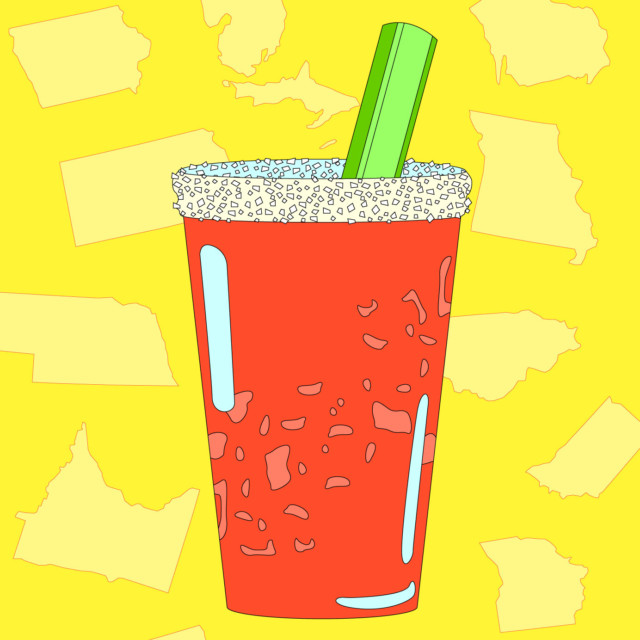For a vast majority of beer drinkers, seeing “Red Beer” on a menu most likely conjures up images of an amber-tinted generic beer. But in the Midwestern United States, Red Beer is a regional specialty — one that’s enjoyed in Minneapolis restaurants, Nebraska tailgates, and Sunday brunches. It has more in common with a popular brunch cocktail than any amber ale or lager. That’s because there is no specialty malt involved at all, but rather one key ingredient: tomato juice.
Red Beer closely resembles a Michelada or a Bloody Mary. However, its key difference is its simple, two-ingredient recipe: light beer and tomato juice.
“Bloody Marys feature a spirit, Micheladas tend to use hot sauce and savory ingredients, and Red Beer is sans the spirits and the hot sauce,” Jeff Rogers, bar director for Jester Concepts, a Minneapolis-based hospitality company, says.
Rogers, who has spent 26 years in the hospitality industry, says the simple mix has been a fixture of dive bars and football tailgates for as long as he can remember. The tangy drink is so popular, it’s known by a variety of names throughout the Midwest, including “Red Rooster,” “Red Eye,” “Red Draw,” “Bloody Beer,” and “Montana Mary,” each celebrating its own regional twist or personal recipe, like the “Kicked-Up Red Beer” by Nebraska-based recipe blog An Affair from the Heart. One very specific riff, blogger Michaela writes, is tomato juice and Busch Light in a Solo cup at a Nebraska football game, also known as a Busch Latte. Her family recipe adds a Bloody Mary dry spice rub, and a pickle or olive garnish.
While some red beer fans foray into spicier mixes, Rogers notes that adding hot sauce to the traditional two-ingredient drink pretty much makes a Michelada. He prefers making his with lager, including his go-to Grain Belt Premium, and, sometimes, seasonings or Worcestershire sauce. That said, the possibilities are sort of endless. “These are like pizza — everyone has a vision of what they want,” Rogers says. “I have seen chocolate, fish sauce, endless amounts of hot sauce, raw eggs, [and] garlic cloves added [to Red Beer]. It is crazy to even try to define a traditional one because of this.”
Today, you can even find takes on Red Beer in Midwest breweries, like Short’s Brewing Co.’s Bloody Beer, which the brewery describes as “the reciprocal of a Bloody Mary that’s made with a little beer. In this case, the majority of the beverage is beer instead of tomato juice.” The concoction has a golden beer base, and is fermented with lager yeast and Roma tomato puree, horseradish, black peppercorns, dill, and celery seed.
Another Red Beer quirk? Don’t be surprised if you see buy-one-get-one-free offers, Rogers says. “We do something very interesting in the upper Midwest, especially in Minneapolis: When you get a [Red Beer or Bloody Mary], you get a ‘snit’ or ‘sidecar’ of beer. Most have always thought it was a nice sipper, but it was intended to be poured into the [drink] as you drank it … to help thin it out.”
Rogers and others who have tried to pinpoint the origins of the drink believe that it stems from Micheladas or Sangritas, made with the Midwestern palate in mind. “The upper Midwest just made them fairly plain. Ketchup being a spice up here, it needed manipulation to be palatable for the upper Midwest palates of the time,” he says, jokingly.
Though its origins may be unclear, Red Beer has a definitive purpose: to revive and refresh thirsty Midwesterners the way only a regional remedy can.
